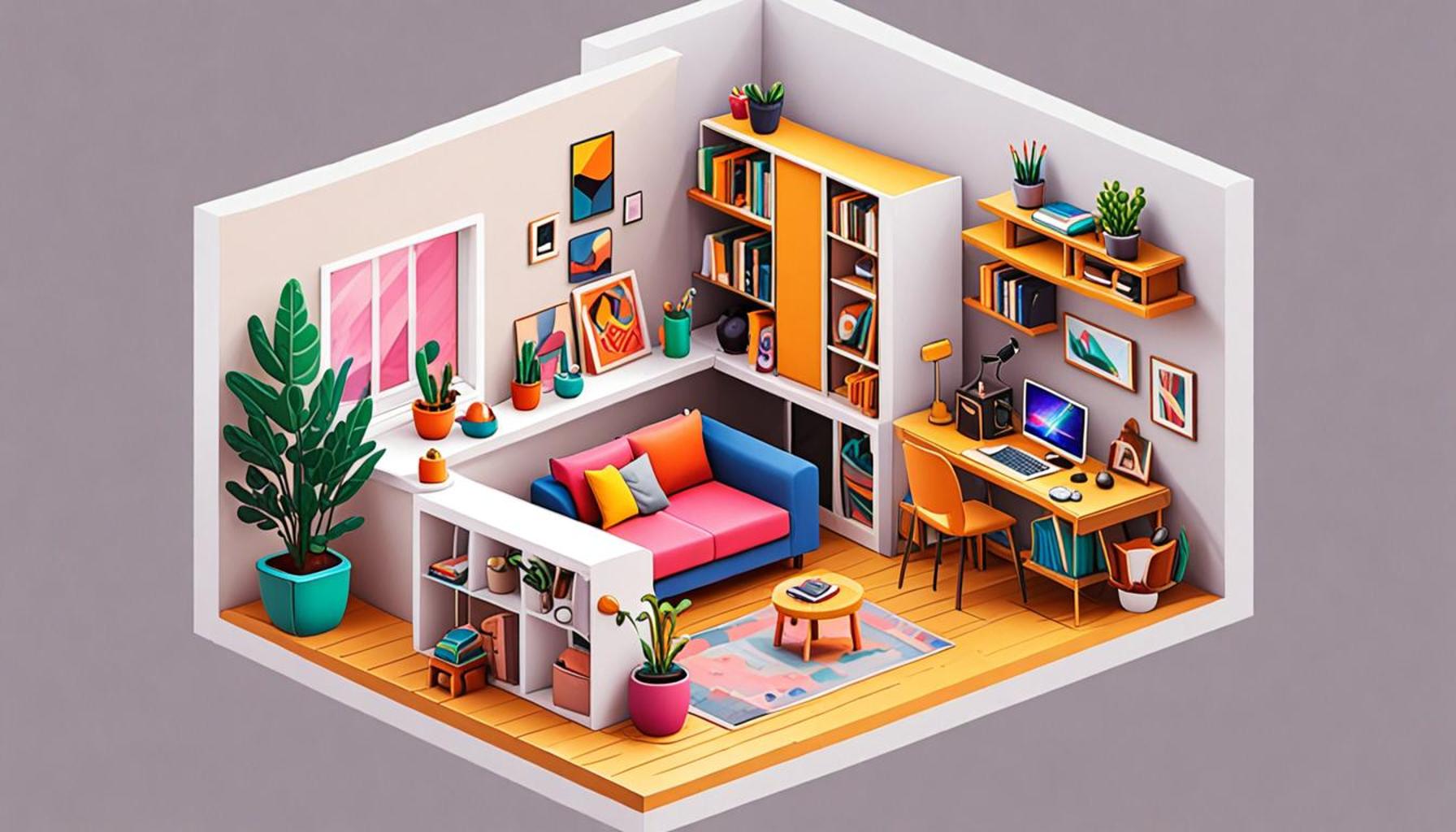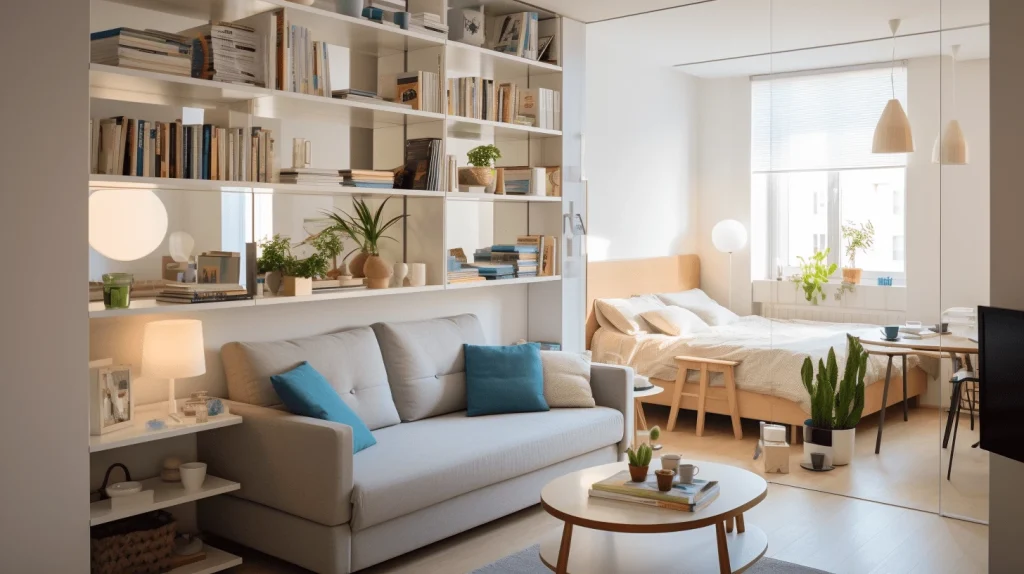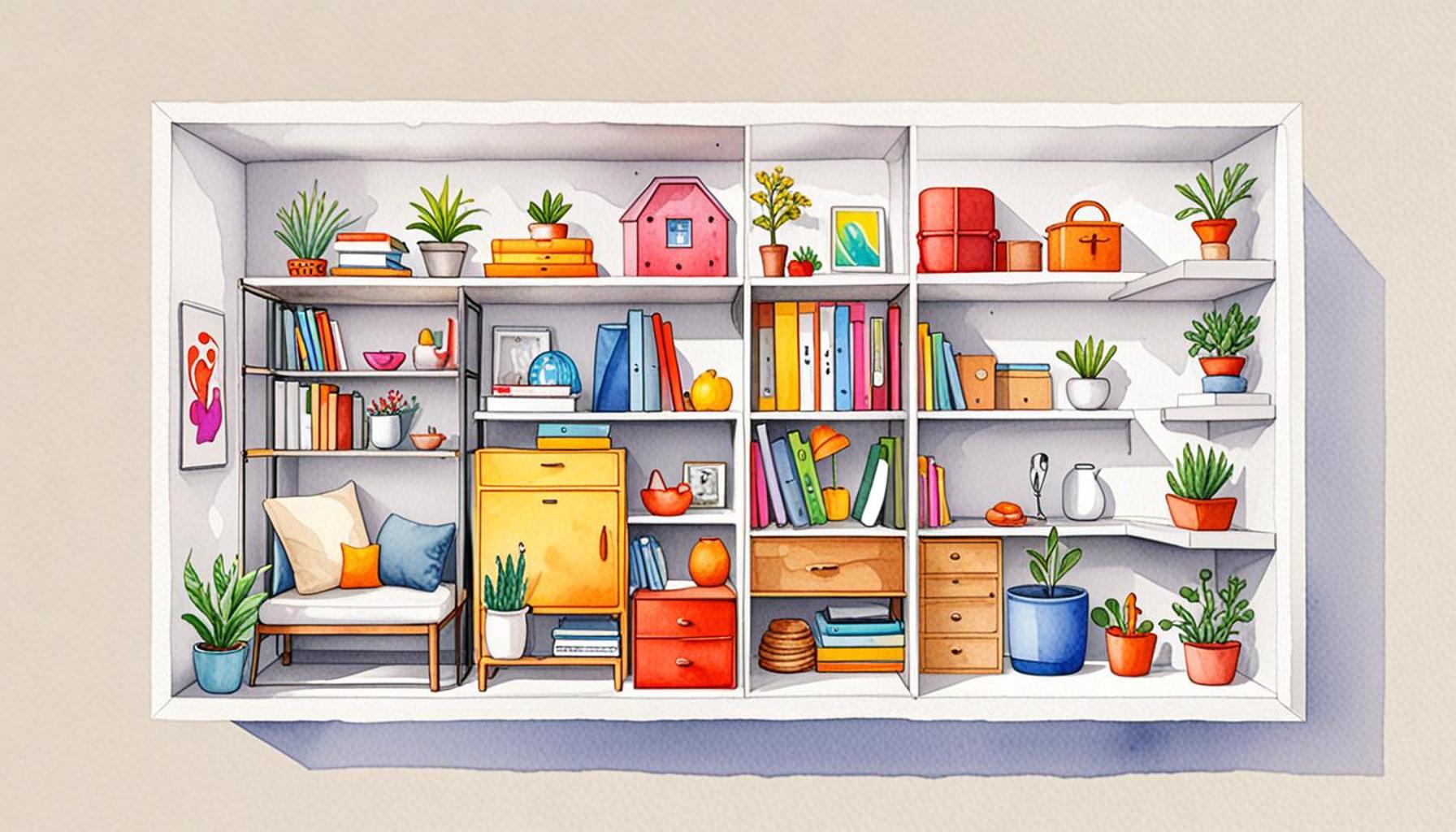Maximizing Small Spaces: Optimization Strategies for Minimalist Environments

As urban populations swell, living arrangements have evolved and adapted, leading to a greater prevalence of small living spaces across the United States. With individuals and families now frequently opting for compact apartments or tiny homes, the importance of effectively utilizing every square foot becomes evident. Instead of viewing these constraints as limitations, many have embraced the chance to cultivate environments that are both stylish and practical through creative solutions. This balance of aesthetics and utility is at the heart of a thriving minimalist lifestyle.
Benefits of Maximizing Small Spaces
Adopting strategies to enhance limited areas can lead to numerous advantages, such as:
- Increased organization: Efficient storage solutions are essential for keeping your space tidy. Utilizing baskets, under-bed storage, and over-the-door organizers can significantly reduce clutter. For instance, utilizing vertical space with shelving can ensure that your favorite books or decorative items are easy to access while leaving floor space clear.
- Enhanced aesthetics: A well-designed small space can appear more open and inviting. Employing a cohesive color scheme and incorporating personal touches, like artwork, can create an atmosphere that feels both creative and tranquil.
- Improved functionality: Thoughtful layouts encourage better use of each square foot. By considering how you use your space daily, you can arrange furniture in a way that promotes both functionality and flow. For example, placing a dining table near the kitchen can make meal prep seamless and efficient.
Key Strategies for Optimization
Maximizing a small space involves innovative approaches that cater to both personal needs and stylistic preferences. Consider these effective strategies:
- Multi-functional furniture: Incorporate pieces that serve multiple purposes, like a sofa bed that comfortably accommodates guests or ottomans with hidden storage that double as seating. These smart selections ensure that every piece in your living space contributes to function without sacrificing style.
- Vertical storage: Use wall-mounted shelves or hooks to free up floor space while displaying decor or organizing essentials. For example, hanging pots in a small kitchen not only saves counter space but adds a vibrant, homey touch to the area.
- Light colors and mirrors: Utilize lighter palettes and reflective surfaces to create an illusion of greater space. Soft whites, pastels, or light grays can open up a room, while strategically placed mirrors can reflect light and give the impression of a larger area.
With the right techniques and a little creativity, anyone can transform a cramped area into a highly functional and aesthetically pleasing environment. By exploring these optimization strategies, you can elevate your minimalist living experience and create a space that feels not only livable but also truly unique to you.

DIVE DEEPER: Click here to learn more
Creating a Versatile Living Environment
In the quest to maximize small spaces, the first step is often reimagining how you interact with your surroundings. Spaces that may seem cramped can actually be made versatile and functional with targeted strategies. By analyzing your daily routines and understanding your unique requirements, you can start designing a living environment that flows seamlessly and supports your lifestyle.
One crucial aspect is the careful selection of furniture. In small environments, every piece should add value without creating clutter. When shopping for furnishings, consider items that blend multiple functionalities. For instance, a coffee table that lifts to become a dining surface can benefit those working from home or hosting guests. Dining chairs that tuck neatly under the table or stack away when not in use can fortify your space’s functionality while promoting an uncluttered appearance.
The Impact of Color and Light
The visual impact of color and light cannot be overstated when it comes to optimizing small spaces. A well-chosen color palette can dramatically change the perception of space. Stick to lighter hues and pastel shades for your walls, as they help reflect light, creating the illusion of a more expansive area. Neutral tones like soft whites and light grays can serve as a clean, calming backdrop, allowing decorative elements to shine without overwhelming the room.
Incorporating mirrors can also be an effective method to enhance depth. Strategically placing a large mirror opposite a window reflects natural light, making the area feel more airy. This clever use of surfaces not only brightens the environment but can also serve as a stylish focal point in your design. Explore options like mirrored furniture or artwork to enhance this effect further.
- Layered Lighting: Utilize a combination of ambient, task, and accent lighting to create a warm, inviting atmosphere. Consider using adjustable floor lamps and sconces that help to free up surface space.
- Creative Storage Solutions: Look for opportunities to incorporate storage into unconventional areas, such as under the stairs or above cabinets. High shelves can store less frequently used items, while decorative boxes can maintain an organized appearance.
- Open Shelving: When applied thoughtfully, open shelving can create an elegant display while allowing easy access to everyday items. Be intentional about how you style these spaces; less is often more in small environments.
By approaching small space living as an opportunity instead of a limitation, you can craft an environment that is both functional and visually appealing. These practical strategies encourage a thoughtful arrangement that enhances not only the use of your space but also the overall experience of living within it. Delving deeper into these techniques can inspire new ideas and solutions tailored to your personal taste and lifestyle.
| Optimization Strategy | Benefits |
|---|---|
| Multi-functional Furniture | Enhances utility without occupying extra space, while keeping the aesthetic minimal. |
| Vertical Storage Solutions | Utilizes wall space effectively, allowing for optimal organization and reducing clutter. |
| Decluttering Practices | Promotes a serene environment by minimizing distractions and maintaining focus on essentials. |
| Natural Light Maximization | Increases the perception of space and promotes a breathable ambiance while enhancing mood and productivity. |
In an age where space is often a luxury, maximizing small spaces is more relevant than ever. Utilizing effective optimization strategies not only enhances your living environment but also fosters a greater sense of peace and tranquility. Embracing multi-functional furniture can drastically increase utility in your home setups, allowing you to adapt your living area for various needs without creating visually disruptive clutter. Moreover, implementing vertical storage solutions can transform walls into productive spaces, effectively expanding your available storage while retaining a sleek look.Another essential factor of optimization is the practice of decluttering, which can significantly improve mental clarity and focus. By inviting more natural light into your space, you create an illusion of openness that not only enhances energy levels but also complements minimalist aesthetics. Each innovative strategy contributes to creating harmonious environments that reflect a modern, minimalist lifestyle. Thus, whether you’re an urban dweller or simply working within constrained spaces, understanding these optimization strategies is crucial to crafting an inviting atmosphere that feels expansive and stylish.
DISCOVER MORE: Click here to find out how
Innovative Layouts for Enhanced Functionality
When it comes to maximizing small spaces, the layout is king. A thoughtfully designed floor plan can transform how you utilize every square foot. Embrace the concept of zoning, which involves delineating areas for different activities without the need for physical barriers. For instance, in a studio apartment, the placement of furniture—like a strategically positioned bookshelf or a fabric screen—can create a cozy sleeping nook, a workspace, and a relaxing living area, all while maintaining an open, airy feel. This flexible approach not only promotes functionality but also encourages a more fluid movement throughout the space.
Consider using a focal point to guide the layout naturally. For example, a feature wall with a bold color or artwork can provide visual energy and draw the eye, making the rest of the room feel less congested. Utilizing rug placements to outline different zones can also work wonders— a soft area rug beneath a sofa can indicate a lounging space, while a bright mat under a dining table symbolizes an eating area, allowing for clear functionality without heavy partitions.
Smart Technology Integration
In today’s digital age, the integration of smart technology offers incredible potential for small space optimization. Smart home devices, which often combine functionality with energy efficiency, can significantly reduce clutter while enhancing convenience. For instance, smart thermostats not only regulate temperature but can also monitor and analyze energy usage, promoting sustainability without sacrificing comfort. Lighting systems controlled via app or voice activation can adjust ambiance based on mood or time of day and reduce the need for multiple light sources.
Incorporating automatic multi-functional gadgets also heightens efficiency in small environments. Whether it’s a robot vacuum that cleans without you needing to forge a pathway or a smart mirror that doubles as a screen for video calls, these gadgets help you maintain organization and save time.
Personalization Through Multifunctional Decor
Decor can play a profound role in not just beautifying but also maximizing your space. Embracing multifunctional decor allows for unique expression while adhering to the principles of minimalist living. For example, decorative poufs can serve as stylish seating while also providing storage for blankets or magazines. Wall-mounted planters not only green up your space but can also serve as unique art pieces that bring depth to your walls.
Artwork can also maximize space significantly. For instance, vertical wall art creates a sense of height and draws the eye upward, making a ceiling feel taller than it actually is. Similarly, utilizing the vertical space with floating shelves can exhibit personal knick-knacks and plants while keeping surfaces clear.
- Space-Saving Beds: Murphy beds or sofa beds are revolutionary when space is at a premium. They not only serve a purpose, but they also free up room during daytime hours for activities.
- Expandable Furniture: Consider tables that can extend to accommodate visitors or benches that can double as storage units. This adaptability is key for those living in compact environments.
- Floating Furniture: Items like floating desks or shelves occupy less physical space compared to traditional counterparts, maintaining an open atmosphere.
By exploring innovative layouts and integrating smart technologies while making informed decor choices, individuals can create an efficient and stylish environment that makes the most of small spaces. These optimization strategies serve as a template, enabling residents to transform their modest homes into multifunctional havens tailored to their personal lifestyles.
DISCOVER MORE: Click here to learn effective decluttering techniques
Conclusion: Transforming Small Spaces into Functional Retreats
In conclusion, maximizing small spaces requires a combination of innovative strategies, smart technology, and personalized decor. As urban living trends continue to rise, understanding the principles of space optimization becomes increasingly vital for creating vibrant, functional environments within minimalist parameters. By implementing thoughtful layouts that emphasize zoning and flow, residents can effectively delineate their spaces while fostering a sense of openness.
The incorporation of smart technology adds another layer of convenience, reducing clutter and enhancing daily life without overwhelming the aesthetic. From robotic vacuums to adaptive lighting systems, embracing modern innovations can elevate the living experience in compact homes. Furthermore, utilizing multifunctional decor allows for personal expression without compromising on functionality. Items that blend utility with style, such as expandable furniture and decorative storage, can transform a space into an efficient haven.
Ultimately, the art of maximizing small spaces is about balancing practicality with creativity. The strategies outlined herein present a roadmap for individuals aiming to create meaningful spaces that reflect their lifestyles while embracing the elegance of minimalism. As you embark on your journey of space optimization, remember that each decision—from layout to decor—contributes to a harmonious, clutter-free environment that is uniquely your own. Embrace the challenge and discover the potential within your small space!



